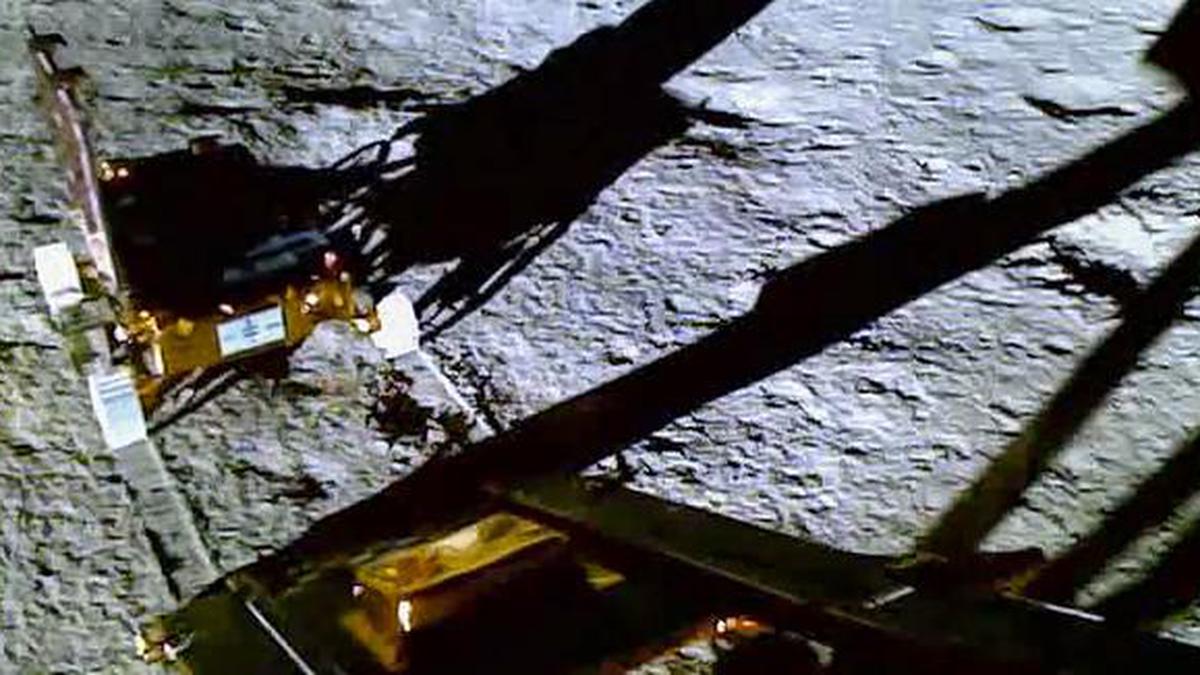
Chandrayaan’s Pragyan rover offers evidence of magma ocean on young moon Premium
The Hindu
The Pragyan rover of ISRO’s Chandrayaan-3 mission has revealed interesting details about the moon’s origins, scientists have reported in the journal Nature.
A long night awaited the Pragyan rover on the moon as it bid farewell to operators at the Indian Space Research Organisation (ISRO) one last time. The subzero temperatures proved too low for the suitcase-sized rover. Fourteen days after landing on the moon as part of India’s historic Chandrayaan-3 mission, the rover went to sleep forever.
But in this window, the machine had already met all of ISRO’s expectations and completed its scientific goals. It had spent two weeks studying the lunar soil and relayed valuable scientific data back to the earth in anticipation of a slew of discoveries — from recording the presence of sulphur to confirming the presence of certain small rock fragments around crater rims near Shiv Shakti point, the place where the Chandrayaan-3 lander descended.
Today the Chandrayaan-3 team may have reported its most significant finding thus far, one that sheds light on the moon’s origins.
In a study published in the journal Nature on August 21, the research team has reported finding the presence of a rock type called ferroan anorthosite in the lunar soil. The sighting is important because it confirms what the U.S. Apollo missions and the erstwhile Soviet Union’s Luna missions saw from the lunar equator in the 1960s; Pragyan operated in the lunar south pole region. The consensus among scientists is that these anorthosite rocks could be the remains of an ancient ocean of magma that blanketed the moon’s surface some four billion years ago. Data from Pragyan builds support for this idea.
“Ferroan anorthosite rocks are very common on the earth,” Santosh Vadawale, the principal investigator of Pragyan’s Alpha Particle X-ray Spectrometer (APXS) instrument and the first author of the study, told this reporter. In fact, the earth contributed all the anorthosite found on the moon today.
As the consensus goes, the moon was born from the remains of a headlong collision between the early earth and some rogue planetary body aeons ago. The moon’s rocky surface was initially molten. The minerals in there slowly crystallised as the lava cooled to form rocks of various kinds, including ferroan anorthosite.
Meteorites raining down on the moon beat these rocks down to fine dust over many centuries. Similar weathering phenomena occur on the earth but the moon has a very thin atmosphere and lacks volcanic activity, so all meteors reach the surface and the surface isn’t replenished with new rocks over time.

In a study published in the journal Mammalian Biology on December 23, 2024, researchers compared the calls of Asian elephants based on their age, sex, and behaviour. They found the duration of trumpets remained fairly consistent across all age classes for both male and female Asian elephants but roars and roar-rumbles got longer with age.












